I’ve been saying for years that I wanted to learn more about birds and get into birdwatching, but for the longest time, I didn’t know how to start. And so I didn’t start. I’m writing this in hopes that the same thing doesn’t happen to you.
I don’t know about you, but I’ve long had this conception of the bird-watchers as eccentric, unfathomably knowledgeable, and fervent to a disturbing degree. When I’m perusing the natural history section at my local library, the amount of bird books dwarfs that of books about plants, fungi, reptiles, and even mammals — the detailed knowledge that humankind has amassed about birds is utterly staggering and possibly pathological. While cacti or frogs or butterflies may be an interest, birdwatching seems invariably an obsession.
Birds are the charming fauna which abound most visibly and widely in our world, that can be seen absolutely everywhere, and they come in a stunning array of sizes, shapes, colors, and patterns. While many bird species are in decline due to the unchecked expansion of human society, many others thrive in human built environments, finding new food sources and nesting spaces that have allowed their populations to expand along with humans. It’s no wonder people are so deeply fascinated by them — literally no matter where you live, birds around that you can begin watching today.
Even though they are omnipresent, birds' constant movement and ability to fly away when startled obviously makes them harder to closely observe than plants, fungi, lichen, bugs, and other stationary or slow-moving beings of the natural world. I can almost always take good enough photos of a plant I encounter to identify it later with the help of a field guide, if not on the spot with the app Seek by iNaturalist. With birds, this is not generally the case at all – even with the great camera on my iPhone, I can only capture recognizable photos of the largest, stillest, most gregarious of all birds. It can be hard to even get your eyes on many birds, as they are often just tiny things concealed in the foliage of massive trees or in fields of tall grasses or soaring thousands of feet above you. So how does one go about identifying the birds around them for the first time?
Since the beginning of 2024, I’ve gone from barely knowing what a robin looks like to being able to identify the majority of birds I commonly encounter in my local area and capable of saying at least something about most any bird I encounter – i.e. knowing I’m looking at a sparrow, or a finch, even if I have no idea what species of sparrow or finch. Paying attention to the birds around me has profoundly enriched my experience when I’m out in nature and watching them when I’m outdoors has become an instinctive, automatic delight for me now. Everything from sitting in your backyard to visiting a local park to hiking the backcountry has the potential to be an amazing adventure when you start birding.
Because birding has been such a boon for my mental health this year and an enrichment of my naturalist practice, I’d like to share some strategies that have worked to help me begin birding confidently.
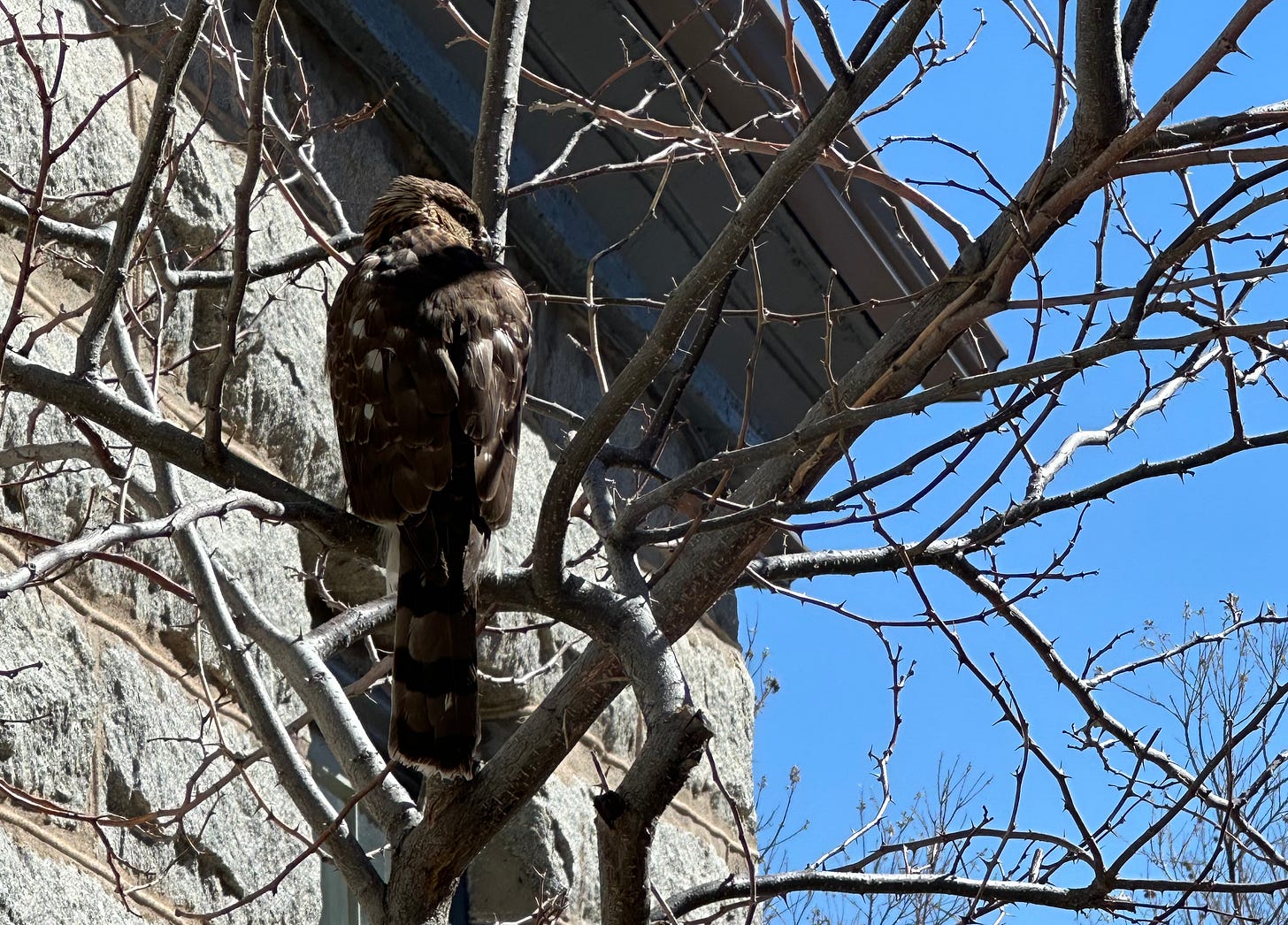
Invest in a good pair of binoculars…
Consider this an investment in your mental health, your connection to nature, your sense of being at home in this world. You can get an excellent pair of binoculars for the cost of a therapy session or two, and I firmly believe it will yield much greater returns for your happiness and well-being. I opted for Celestron DX 8x42 binoculars which go for about $150 as my starter pair. You can pay less or much much more for binoculars, but I’ve been absolutely delighted with the value of my pair for their price – they are easy to use, with a crystal clear image and wide field of view. I never go anywhere to walk or hike without them now, because you never know when a bird or other animal will make an appearance. A good pair of binoculars gives one the paradigm-shifting ability to study wildlife closely without having to be so close to them that you disrupt and change their behavior. Many field marks which will help you identify the birds you see will only be visible with this tool. They literally unlock new worlds.
… And a harness strap. This is all you have to buy, I promise!
If you’re going to be going anywhere with your binoculars, you’re going to need something to carry them with. I cannot recommend getting a harness strap rather than a neck strap enough – they are so comfortable and keep your binoculars easily accessible when you need them, but out of the way when you’re moving about terrain. Plus, you look awesome when you wear it – don’t let anybody tell you you look like a dweeb. You look cool as hell. I tried to buy a neck strap at my local birding gear store The Lookout, and they absolutely insisted I get a $24 Vortex harness instead. I am forever grateful to them for that.
Start with Merlin Bird ID
If you have any interest whatsoever in the birds around you, you must download this app. It’s capable of creating a bird list specific to your exact location, organized by taxonomic order and complete with pictures and ID tips for every single bird you may encounter. This is extremely useful – instead of the more than 11,000 species of birds in the whole world to go off of, you now have a tailored list of the 150-250 species that occur in your area. Sometimes technology is awesome.
Merlin also has amazing sound identification capabilities. This is extremely useful for the beginning birder, because birds are often much easier to hear than they are to see. You just tap record, and Merlin begins creating a list of the birds it can hear, highlighting their names when it is actively hearing their call. You can click on the birds that come up and listen to lots of archival recordings of their songs and calls. This is a great tool for matching birds to their sounds, and knowing what birds you are hearing can give you search images that then make it easier to spot these birds in your landscape. It’s very useful to know if you’re searching for a black bird the size of a chicken or a red bird the size of a sparrow.

But don’t stop with apps… get a local field guide, or multiple
A physical field guide, or multiple, is essential to have in your birding arsenal. Merlin is an amazing tool, but a great field guide goes much further in the specificity of its ID characteristics, range maps, and comparisons between similar species. Plus, analog tools like books do not have the distracting qualities of digital tools – they keep us grounded in the physical world of the birds.
Test out multiple field guides from your local library to see what works best for you. You can choose field guides specific to your country, your region, or even your state or province. I am partial to the Peterson Field Guide to Western Birds, which covers my home state and the nearby states in which I spend most my time. It contains wonderful illustrations of more than 700 bird species from several different angles, placing them side by side with their most visually similar relatives to help with tricky identifications. My only gripe with it is that you have to flip to an index in the back of the book to see the range map for the species you’re looking at. Sibley Guides, another excellent resource, have range maps on the pages with the birds, but otherwise, I find that Sibley Guides give a bit too much detail for a beginner.
It’s great to keep a birding field guide on your nightstand to flip through before bed. I promise you it is a much more enriching and soothing way to entertaining yourself than Instagram Reels – you will feel better for it. Spending time with your field guides will help familiarize you with all the types of birds there are in your region of interest and how the birds are organized by scientists and birdwatchers. This will make it easier, when you see a new bird in the field, to know what part of the book you’ll find them in.
You don’t necessarily have to take an entire book out with you every time you bird, though most every time I do this, it comes in handy. Sometimes it is enormously helpful to reference detailed information on the spot, while the bird is right in front of your or its image is fresh in your mind.
Remember the 80/20 rule
Birds, like many things, follow the 80/20 rule – you will see only 20% of the birds that occur in your area 80% of the time. Hell, I would skew the distribution even more in many places — you may see only 10% of the birds that occur in your area 90% of the time. What this means is that you will be surprised how quickly you can start identifying most of the birds you see – I only had to learn perhaps 25 birds to do this, and most of these 25 birds look wildly different. No one is going to mistake a Great blue heron for a raven or an Anna’s hummingbird. Learn your common birds really, really well, and this will quickly boost your birding confidence and make the rare birds stand out.
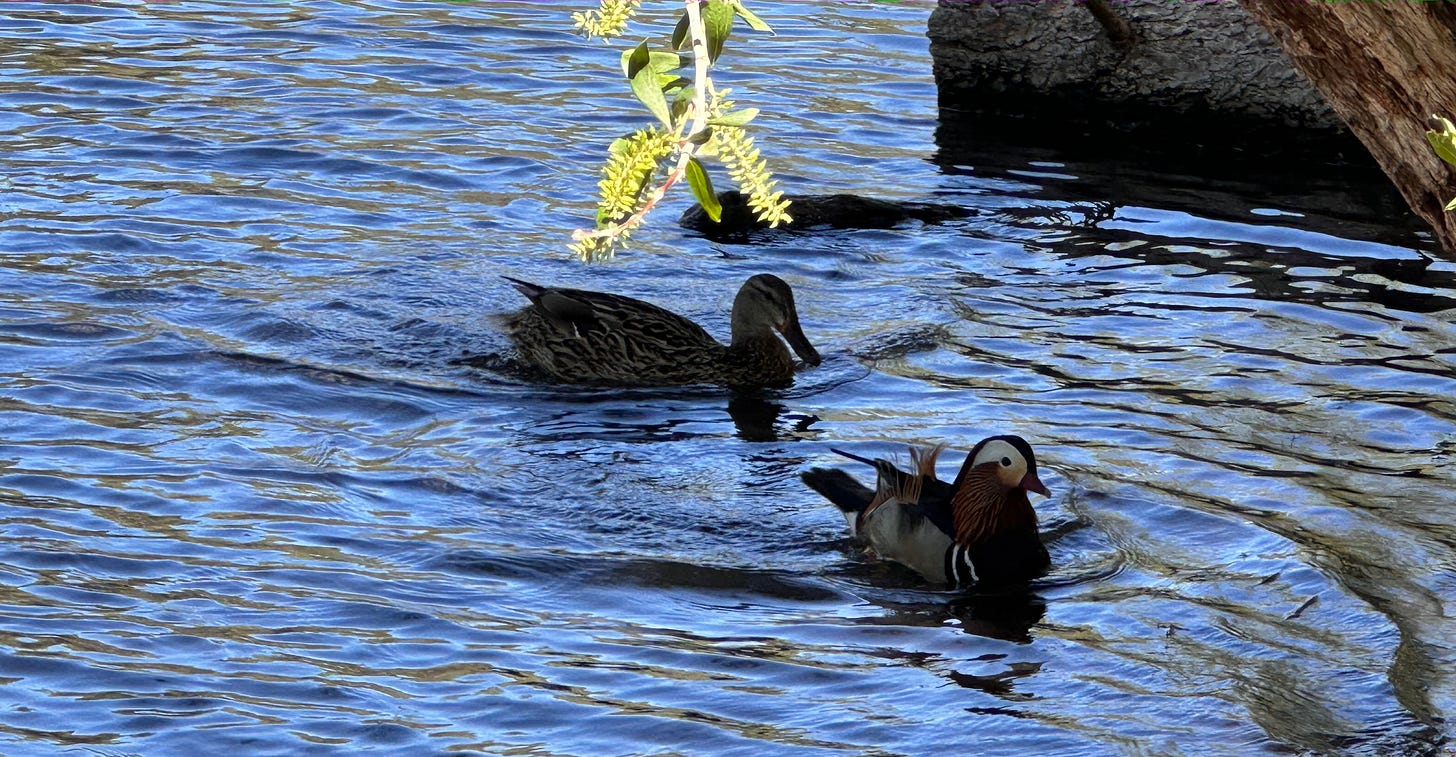
Start with waterfowl
If there are any bodies of water in your area, particularly ponds and lakes, go there first. Trying to locate warblers the size of tangerines in a grove of 100 foot tall cottonwoods can be damn near impossible, but spotting geese, swans, grebes, coots, and other birds that hang out on the water is very easy. They are literally sitting ducks that you can study as long as you like.
Did you know that there are many more ducks than just Mallards, and not all geese are Canadian? This really did not occur to me before I started birding. There are so many charming species of dabblers and divers out there that are easy to watch and learn to distinguish. Plus, bodies of water attract other many types of birds like flycatchers and swallows that prey on flying insects.
Keep a list of lifers
Your life list is the list of all birds you’ve seen in your life. Don’t worry about trying to retroactively compile one if you already know some birds – just start right now. You can do this in a simple notebook or with a digital tool. I’ve grown very fond of Birda, an app that allows users to post their one-off bird sightings and log bird-watching sessions. Birda automatically compiles and tallies up your life list as it grows. It quickly becomes fun and addicting, building out your life list, encountering new “lifers,” which is what birders call any species they haven’t seen before.
Put up bird feeders, of course
If you have any space where you live to do this, it truly is a gift that keeps on giving. Feeders are a valuable asset for migrating birds to fuel their journey, and they can provide a steady food source for your resident avian neighbors. They bring more birds to your yard, entice them to come closer to you than they usually would, and persuade them to remain where they are for longer, allowing for very close observation, especially with the aid of binoculars. Throughout the year, the species that visit your feeders will change with the seasons, and it’s always exciting to see who pays you a visit. Even if it’s 90% house finches.
Record as much detail as you can about unknown birds
What do you do when watching a bird you can’t identify? Record as much detail about it as possible! Ask yourself — what size is it, what colorations and patterns does it have on its body and where, what does its beak look like, what are the proportions of its legs and wings and tail to the rest of its body, what is it doing, where are you seeing it, what does it sound like? Most field guides contain introductions which cover all these important questions to ask and the vocabulary you’ll need for describing all the various parts of birds. If you diligently record as much as this information as you can, chances are you will later be able to ID the bird with the help of a field guide. It will take some trial and error — sometimes you will realize later you can’t recall if your bird had a white ring around its eye or yellow wing patches, and you won’t be able to pin down its ID. But that’s okay. Writing descriptions in a notebook or on your phone, and later comparing these to the descriptions in field guides, will help you hone your abilities to pay attention to what is important in the moment of watching a bird.
Make use of online courses and lectures (especially the free ones)
The Cornell Lab Bird Academy offers a huge catalog of courses and lectures for birdwatchers, including a free introduction to eBird. I also found a code online that allowed me to access two of their $30 courses for free, Be a Better Birder 1 & 2 (message me if you want it). These courses are enormously helpful in learning how to look at birds and register the subtleties of their sizes, shapes, colors, and patterns to best identify and distinguish them. From allaboutbirds.org to Youtube, there is abundant, high-quality, free information online to help you learn all about the species and families of birds that interest you.
Contribute to a citizen science platform
When you’re birding, you’re gathering data about what birds are active in a specific time and place, and this information can be enormously useful to biologists and ecologists studying bird populations. There are many platforms where you can contribute to the scientific community as an amateur bird-lover by uploading your observations to a public data set. If you’re looking for a platform that is very bird-specific, detailed, and scientific, check out eBird. If you’re looking for a general-use platform for documenting your observations of flora and fauna, I highly recommend iNaturalist, which has a built-in tool that will suggest what species you’re looking at based on an image. iNaturalist shares your observations with a global community of researchers and citizen scientists who will help you verify the identity of the species you’re looking at. Birda, the app I mention for making a life list, also allows you to contribute to a massive data set open to scientists, to post photos and descriptions of known and unknown species, and to receive comments from the community about what they might be.
Connect with your local bird organizations
The most well-known organization in the US for birders is the Audubon Society — I highly recommend connecting with your local chapter. My town has a chapter that happens to hold their meetings in my nonprofit’s building, and I have heard wonderfully informative and exciting talks at several of their meetings. They run free field trips open to the public, which are a great way to get out in the field with people who know a whole hell of a lot more about birds than you, which is ultimately the best way to learn. Additionally, many state parks, nature preserves, and botanical gardens regularly host free educational bird walks led by staff — look into what they offer at your favorite parks.
Bird with your (quiet) friends
It’s great to have multiple sets of eyes when you’re out in the field looking for birds. If you can find a friend who knows a lot about birds, that’s awesome — you will learn so much through birding with them. If you can find a friend who knows nothing about birds but is interested in learning, that’s also awesome — you can reinforce what you’ve learned through teaching them.
Cultivate depth as well as breadth
It’s exciting to expand your life list with new birds, but it’s also endlessly rewarding to learn more and more about the species you see every day. If you find a spot where birds are nesting near where you live, pay them regular visits (from a respectful distance) to monitor the timeline of their progress. If you feel frustrated about not seeing new birds, or not being able to identify the new birds you see, try spending an hour watching the mourning dives or the ravens or the lesser goldfinches you can find on every street corner. What do you notice them doing, and why might they be doing it? When you’re watching common birds, there will be no dearth of scientific literature and articles online to help you figure out what you’re seeing.
Stay humble
Birding is not about knowing everything — it’s about expanding our world by noticing all the secret worlds within it. It’s about learning to read the language nature. It’s about rejecting the tyranny of algorithms in modern life and reasserting our powers of intentionality and observation (perhaps I will expand upon this in a future essay...)
Remember, there are a whole hell of a lot of birds out there, and a ton of them appear totally nondescript and indistinguishable from each others. You will make lots of mistakes. Even birders with decades of experience will struggle to distinguish streaked sparrows or tiny black and yellow warblers or Empidonax flycatchers. Don’t be discouraged — just keep looking closer. There is always be so much more to know about the lives of birds, for everyone. That is what is so life-affirming about the pursuit.


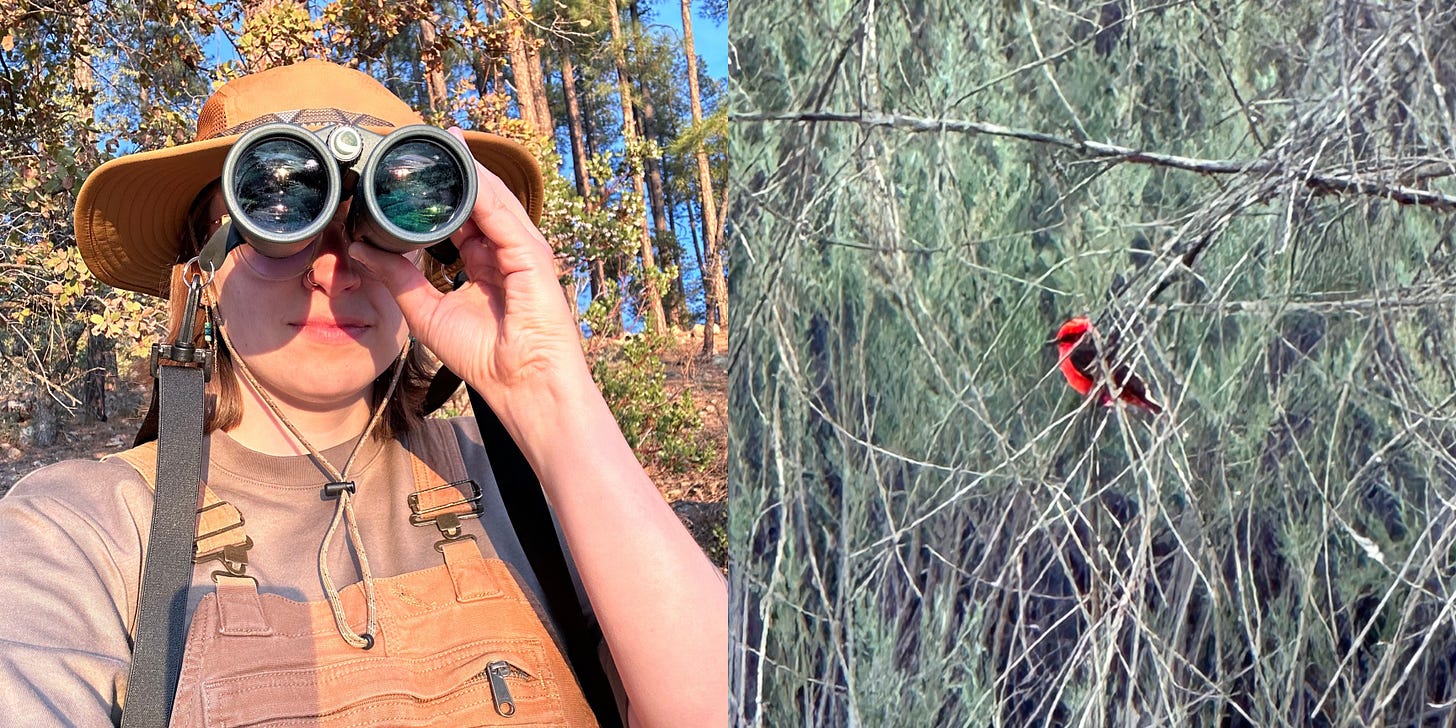
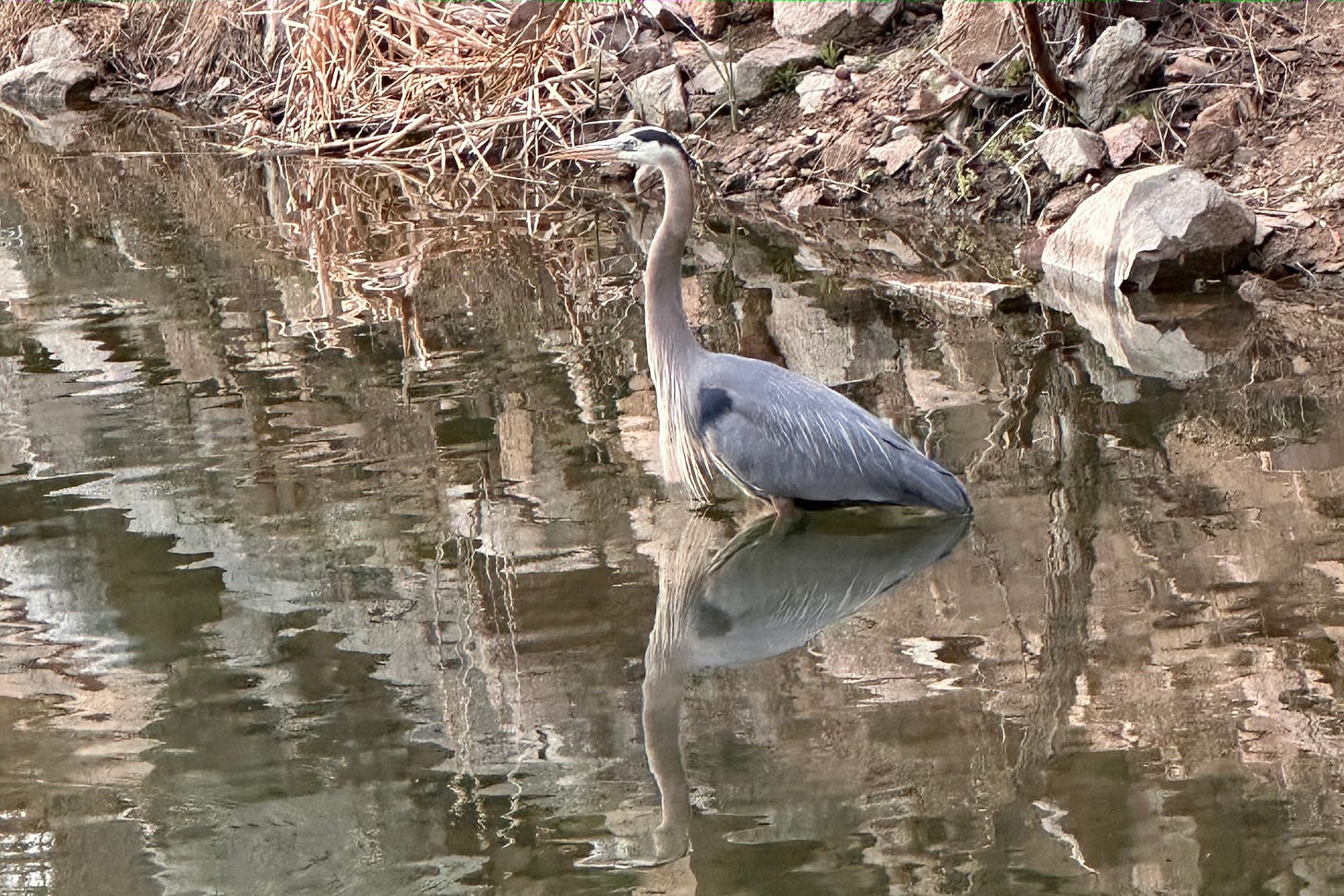
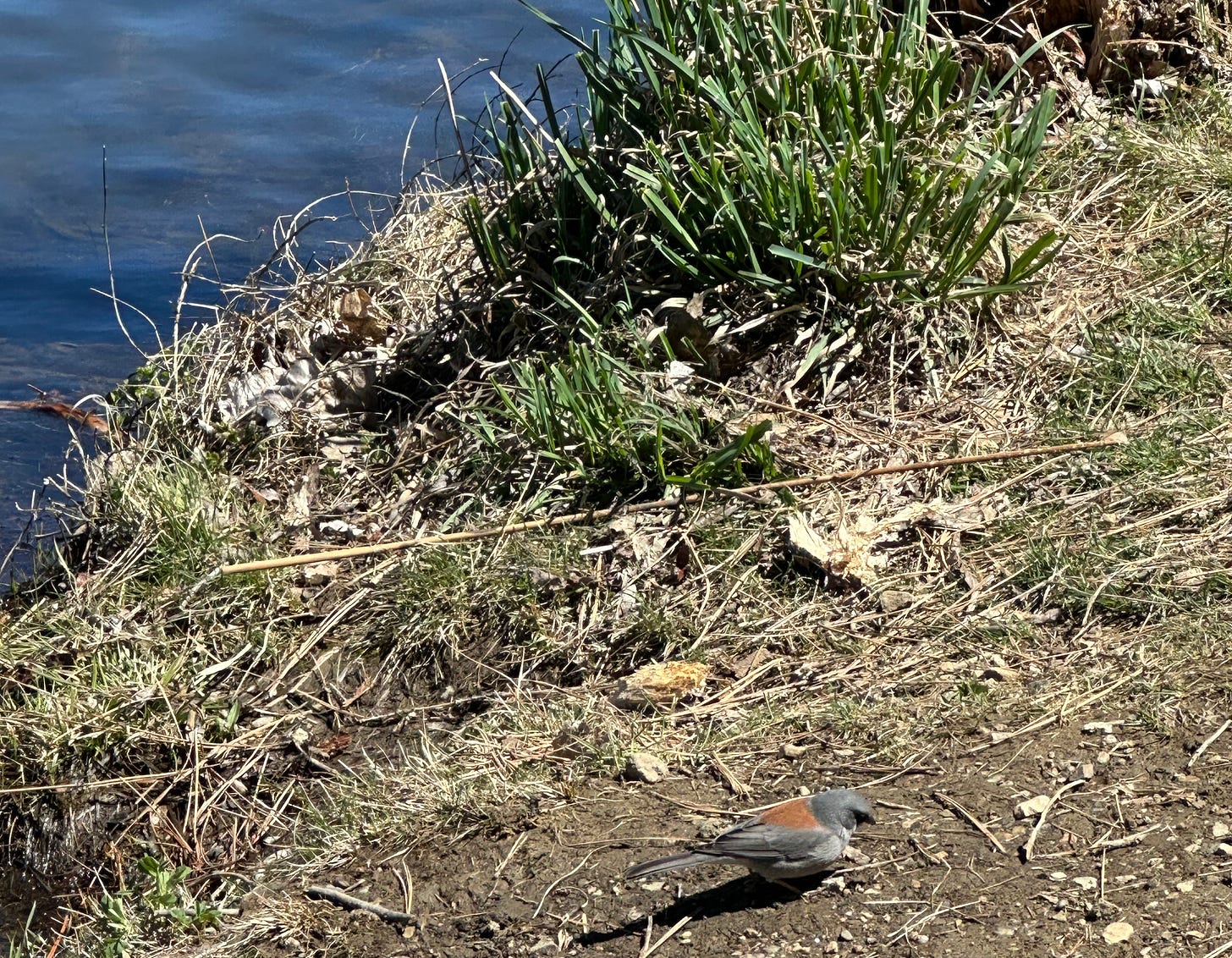
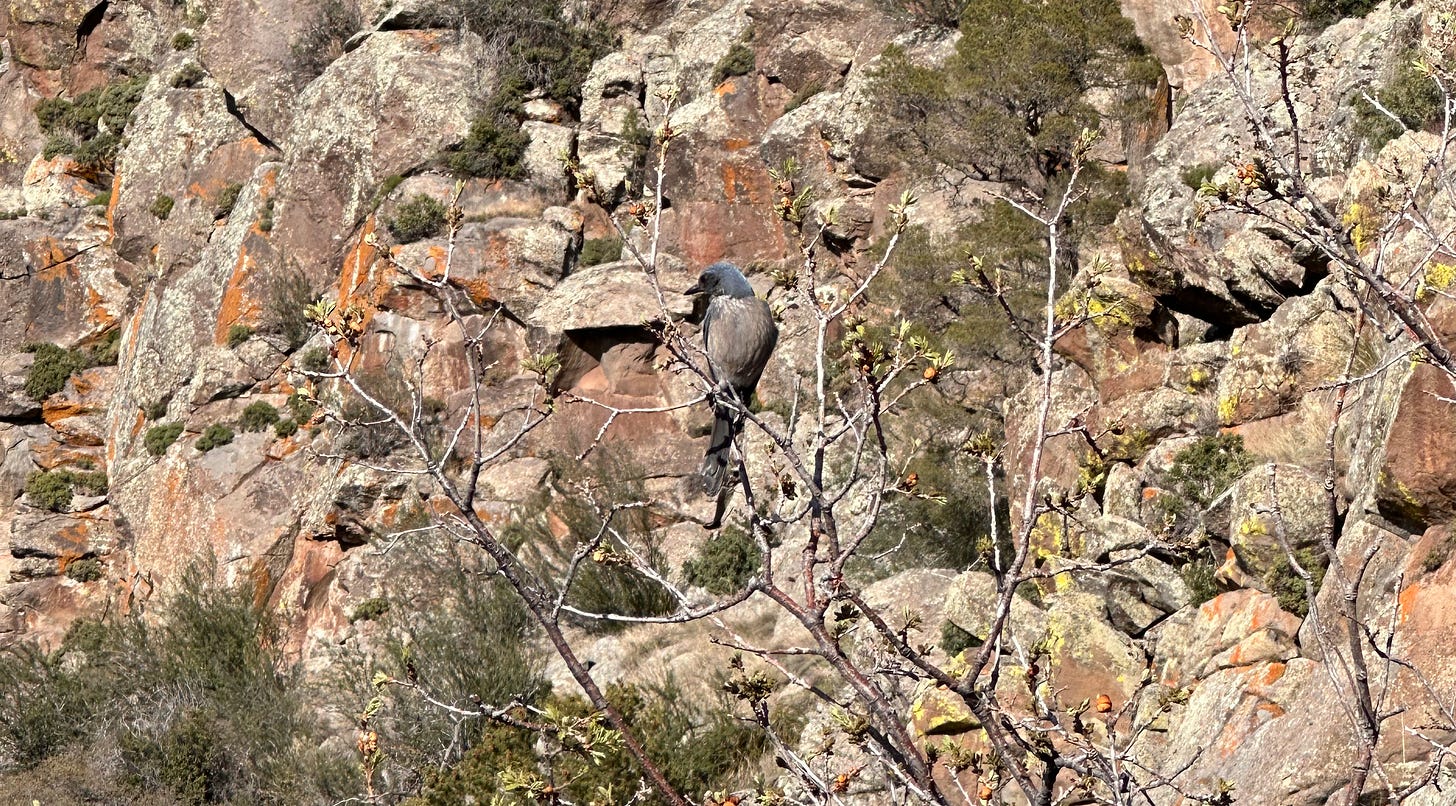
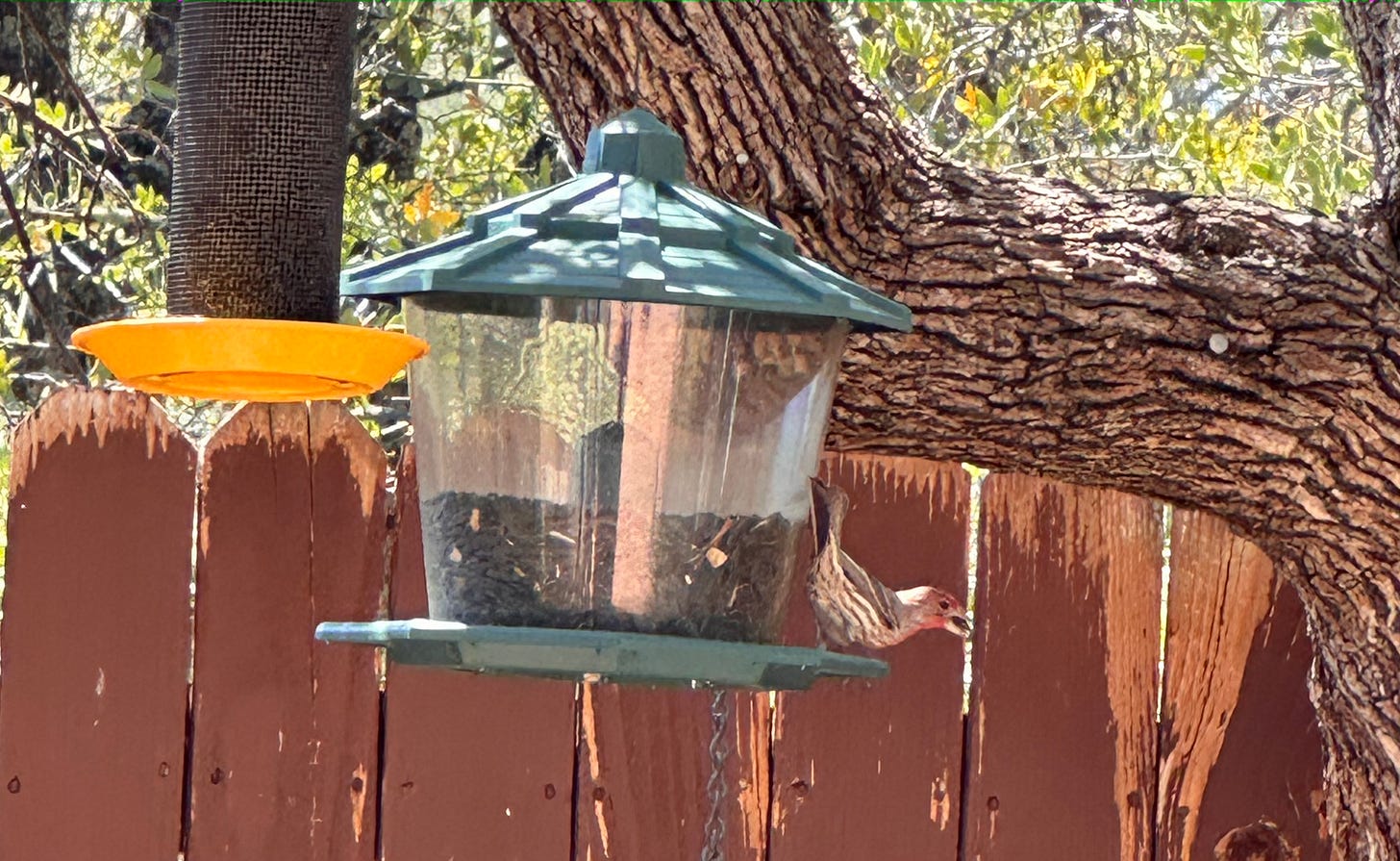
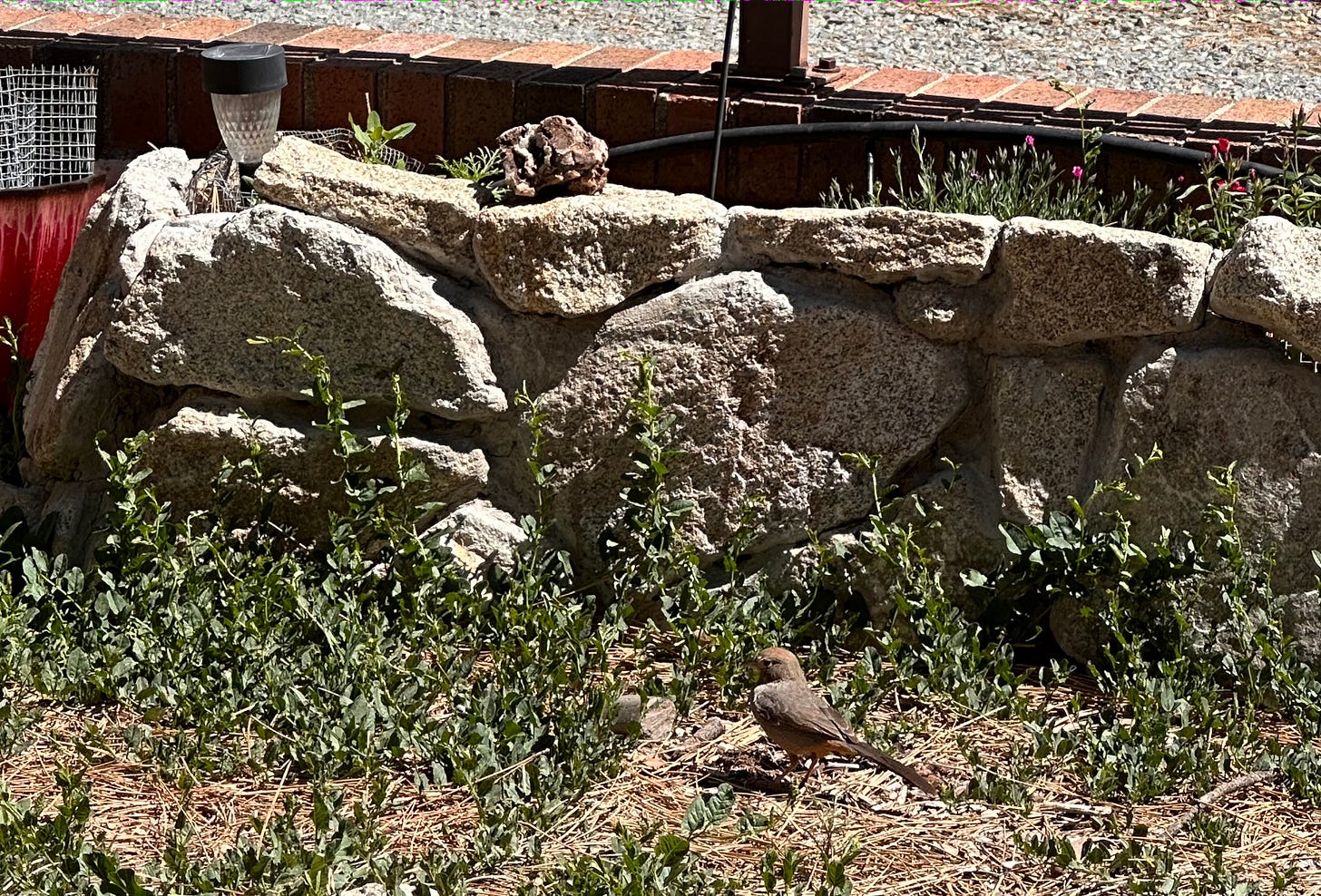
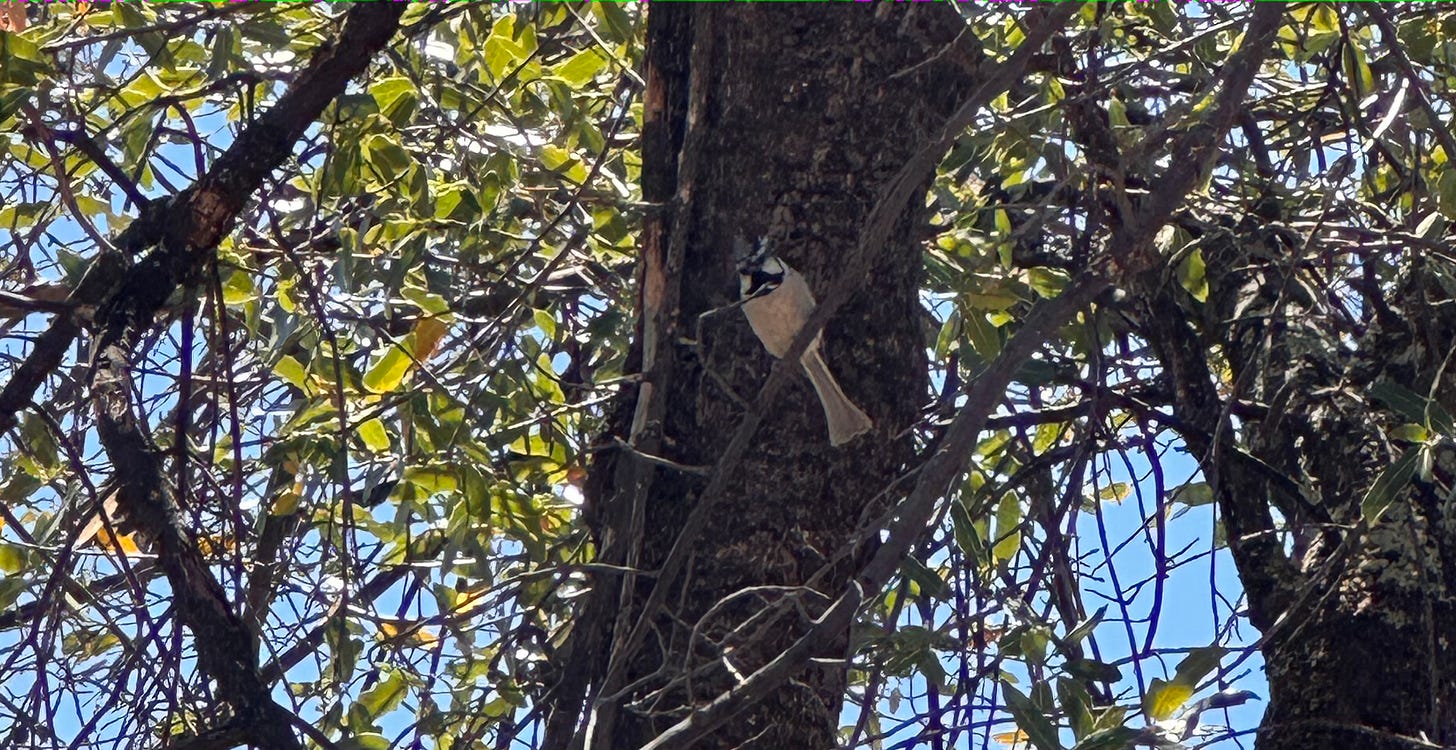

I have always loved birding, although I can say I have never officially referred to myself as a birder. I can recall the places and times in my life when I saw my first blue bunting and painted bunting. I can remember where I saw wood ducks ( one landed in a tree in our yard in the first house we owned). I associate vacations with birds, places we have lived and the many bird surveys I helped Darryl conduct throughout 23 years as a wildlife biologist. He knows I will slam on the brake, back up or do a u-turn (all AFTER checking my rear view mirror) to stop to identify or confirm I did see a (fill in the blank). So glad that you have gained the appreciation and excitement of birding. Haiden used Merlin during our last hike through some woods. It is a great app. Happy Birding, Carly!
Hmm...perhaps I will give birding another try. Maybe a better setter of binoculars would help. Another lovely article.